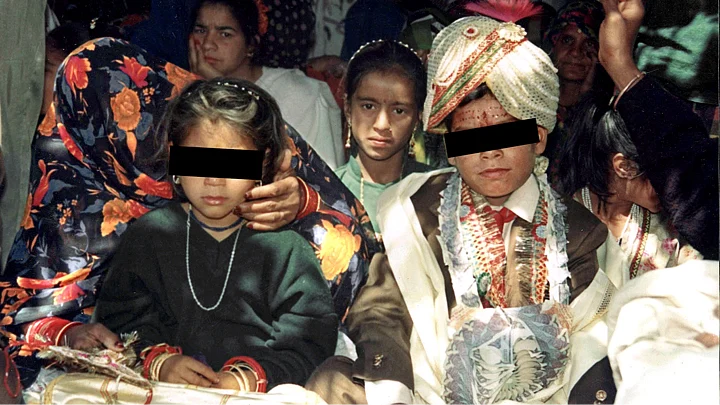(On Akshaya Tritiya, a day that is considered auspicious for starting new ventures, many child brides fall victim to the practice of child marriage. This article was first published on 9 May 2016.)
“Child marriage” pops up twice in the annual cycle of any newsroom. When forward plan calendars mark the Akshay Tritiya festival at edit meetings. And editors resort to the regular.
“Find that activist in Rajasthan who is working against child marriage.”
And the reporter has the expected response.
“Sir, she says it is happening but no one can see it anymore...no video, no pictures.”
No videos, no pictures, but child marriages are happening everywhere, even in the Capital’s backyard, Greater Noida. I know, because I met Omvati last weekend.
Omvati is our colony’s “maalishwali” who promised me a pain-free shoulder with her “zor ka jhatka”. As I stifled a scream between her yank and pull, she giggled, condescendingly, saying “Bas? Bhabhiji, I bear ten times this pain, every day.”
“Everyday?”
Omvati’s husband beats her up because she did not let him and his “samaaj” marry off her daughters when they were 11-12 years old. She wanted them to study, work, be financially independent. She did not want her daughters to recycle her own cursed fate.
Omvati was married off when she was 11 (husband was 12) years old. Her “gauna” was done right after and she was a mother at 14. Nine more babies followed, but only five survived over the years.
“What else would you expect?” she rues, “with a diet of sookhi roti and chutney, I had nothing to offer the babies in my womb”
Stalling her daughter’s marriages was the easy bit. “Hamein kya pata tha itna panga ho jaayega?” Omvati says, as she sighs and eases the pressure on my arm.
Her husband does not have a regular job and feeding four daughters (and a son) is a grind. She pulled her two older girls (14 and 17) out of “sarkari” school because the teachers wouldn’t turn up and the girls would just wander. She sends her younger daughters (8 and 11 years) to a private school. Since her paltry budget only permits her to educate two, she got the older girls jobs at beauty parlours nearby.
And that is when the “panga” happened.
Both girls fell in love with boys at work. Omvati’s husband blames her for this “badnaami”. He abuses and beats her up everyday, reminding her that things would have never come to this had the girls been married off as kids. He got both girls to quit their jobs.
In her village near Khurja, she tells me, child marriage is still the norm, and she and her daughters are not very welcome.
“Yeh pyaar-vyaar ameer, padhe likhe logon ki soch hai. Hum chote logon ki life main itna panga hai na, ki soch kya, sochne ka time hi nahin hai”.
Her husband has started looking for “rishtas” again. The one that turned up a couple of days ago asked for a motorcycle and a dining table. Omvati giggles. “Hamare Patiidev ka mooh dekhne wala tha. Dahej ka paisa to hai nahin.”
While her husband keeps the search up for boys, Omvati is hunting for fresh jobs for her daughters. But no “pyaar-vyaar” this time, she has warned them.
Omvati’s story is too every day and too invisible to TV cameras. It just doesn’t have the drama and heroism. And it is difficult to say if she is winning or losing her battle against child marriage.
It is just another story with no videos, no pictures.
(At The Quint, we question everything. Play an active role in shaping our journalism by becoming a member today.)
